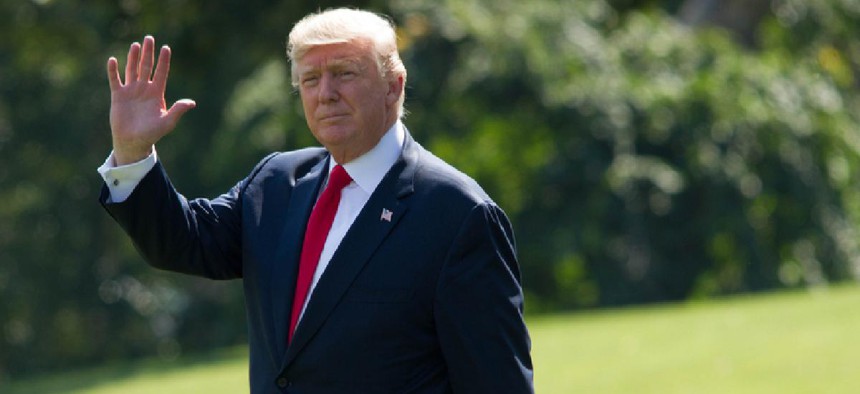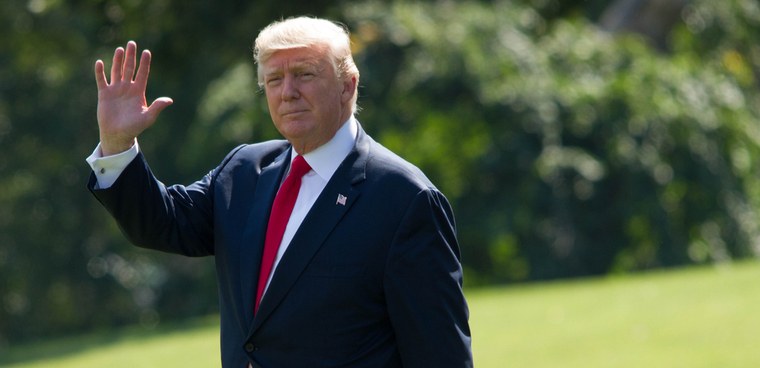Mixed success for House Democrats looking to parry Trump's workforce initiatives

The proposed elimination of the Office of Personnel Management as an independent agency appears to be on hold indefinitely, but executive orders and agency relocations have altered the federal workforce landscape.

In recent months, two Democratic leaders within the House Oversight and reform Committee have begun considering the longstanding impacts of the Trump Administration's policies upon the federal workforce.
Since taking office, President Donald Trump has pushed to restructure government employees' workplace rights and the operations of the agencies they serve.
In May 2018, three executive orders reduced the amount of official time union leaders could claim, streamlined the grievance negotiation process between employees and management, and barred unions from accessing facilities, aggravating bargaining table conflicts between federal sector unions and department management.
Rep. Gerry Connolly (D-Va.), the chairman of the Government Operations subcommittee of the House Oversight Committee, told FCW in an interview that such actions were indicative of the administration's philosophy and the "unrelenting hostility" it displayed with respect to federal employees.
"In every one of his budgets thus far [President Trump has] proposed assaults on federal compensation and retirement contributions," Connolly said.
In its budget request for fiscal year 2021, the White House proposed a rule change that would allow agencies to calculate a federal worker's future retirement benefits on his highest five years of salary, rather than the previous highest three years.
"[President Trump] has proposed changing the rules for calculating retirees' benefits from their highest three salaried years to five years, which would significantly reduce pensions," Connolly continued.
A spokesman for the Office of Management and Budget said that the impetus for the rules change came about as a desire to replicate the private sector's practices, and that the administration had included the measure in budget requests from the start of the administration.
The spokesman added that "private companies typically use the 'high-5' rule" to calculate a worker's retirement benefits, and that the White House's adoption of this rule would "better align the federal pension formula" with that of its private sector counterpart.
In addition to changes in benefit contributions, Connolly said that the consolidation and restructuring of organizational operations was a pressing issue for Congress.
In 2019, several agencies such as the Bureau of Land Management and Department of Agriculture's National Institute of Food and Agriculture and Economic Research Service relocated out of Washington, D.C.
Both moves were deeply unpopular among their workforces and led to a number of employees either transferring to other jobs or leaving the agencies altogether.
"The [agency relocations] were another punitive action aimed at discouraging people from working for federal government," Connolly said. "If it wasn't that, why wasn't there broad consultation? Why wasn't there a comprehensive review of the consequences of relocating federal divisions with particular missions before they made the decision?"
OPM merger stalled
Connolly and his fellow Committee members have spent years fighting against one particular proposed restructuring: the merging of the Office of Personnel Management with the General Services Administration.
"The assault on OPM was a two-year effort to essentially abolish the federal [human resources] agency and fold it into an agency whose mission focuses on leases and building management, not HR expertise," Connolly said. "Their excuse that GSA had a better information technology system was a total non sequitur."
He added that the win to legislatively block the OPM-GSA merger was one he "savored" because of the potential impact it would have had 2.1 million federal workers.
The OPM press office didn't supply comment for this story.
Watching the watchdogs
In addition, Connolly and Rep. Carolyn Maloney (D-N.Y.), the Oversight Chairwoman, said that the administration's recent actions with regards to acting officials has also forced lawmakers to try to explicitly demarcate the chief executive can and cannot engage in.
Maloney pointed specifically to President Trump's removal of several Inspectors General in recent months as one example, which has drawn bipartisan scrutiny.
"Inspectors General are critically important to ensure the government is effectively and efficiently using taxpayer dollars, so they must be protected from retribution of any kind," she said in an emailed statement.
Maloney and Rep. Katie Porter (D-Calif.) have since introduced separate legislation aimed at strengthening existing laws to protect IG officials.
"President Trump's campaign against Inspectors General is the reason I introduced the Inspector General Independence Act with [House] Majority Leader Steny Hoyer (D-Md.) and Subcommittee Chairmen Connolly and Stephen Lynch (D-Mass.)," Maloney said.
"The Act is meant to protect Inspectors General from being fired for political retaliation."
President Trump's abrupt removal of IG officials in recent months, Connolly said, was indicative of the shortfalls in existing legislation.
"I think even more broadly, what this administration and President have shown is that the relationship between Congress and the executive branch is predicated on respect for gray areas, and respect for norms, not just laws," he said. "That requires Congress to have a comprehensive look at how we codify behavior. We need to limit executive authority and circumscribe it by law, not by practice."


